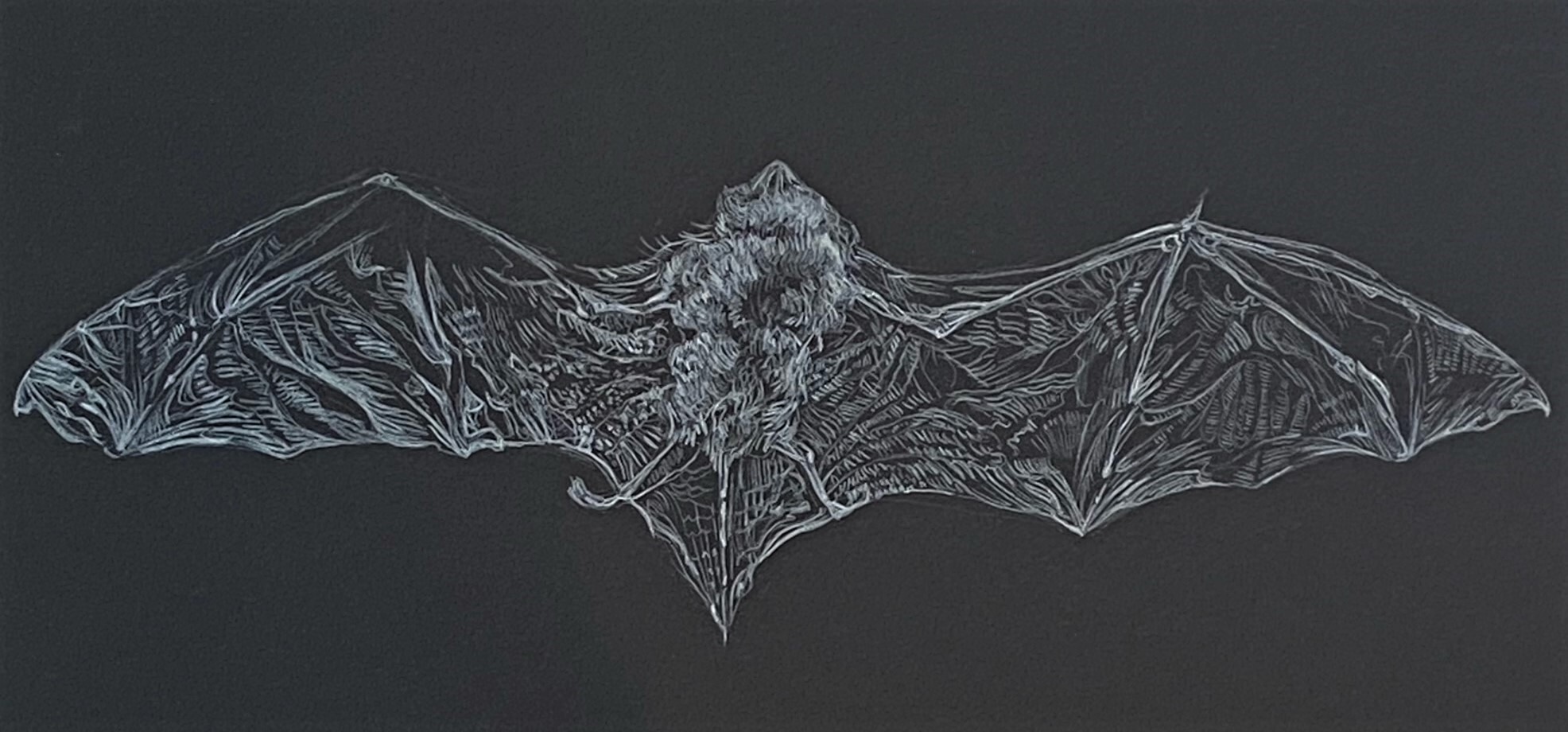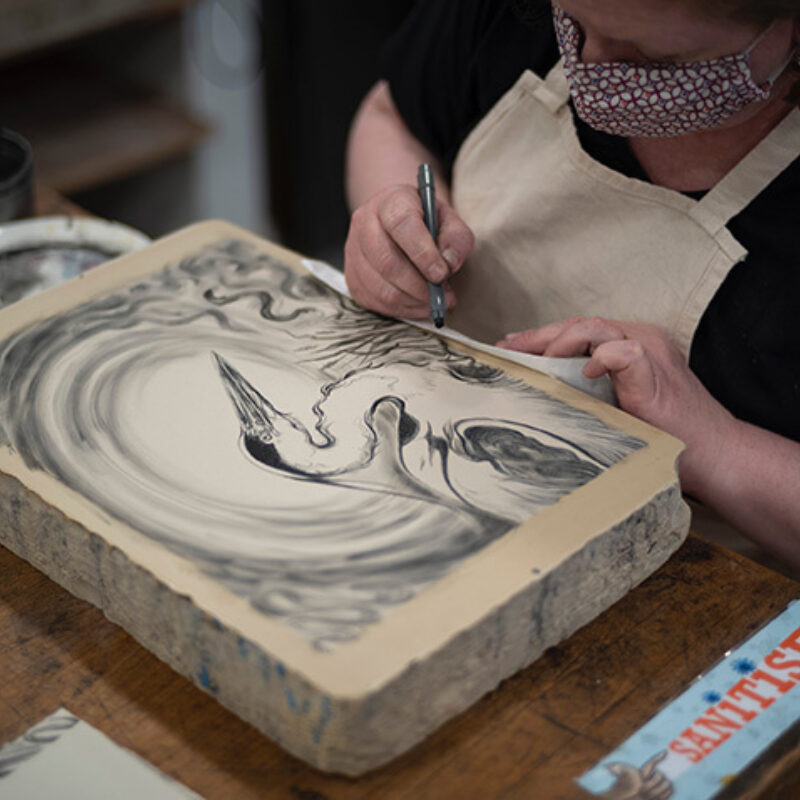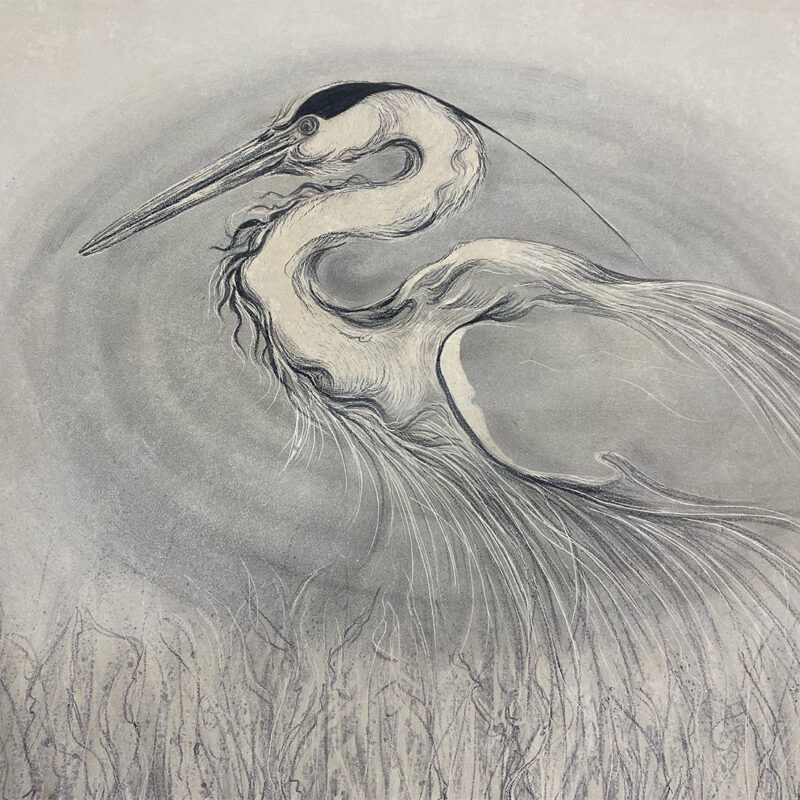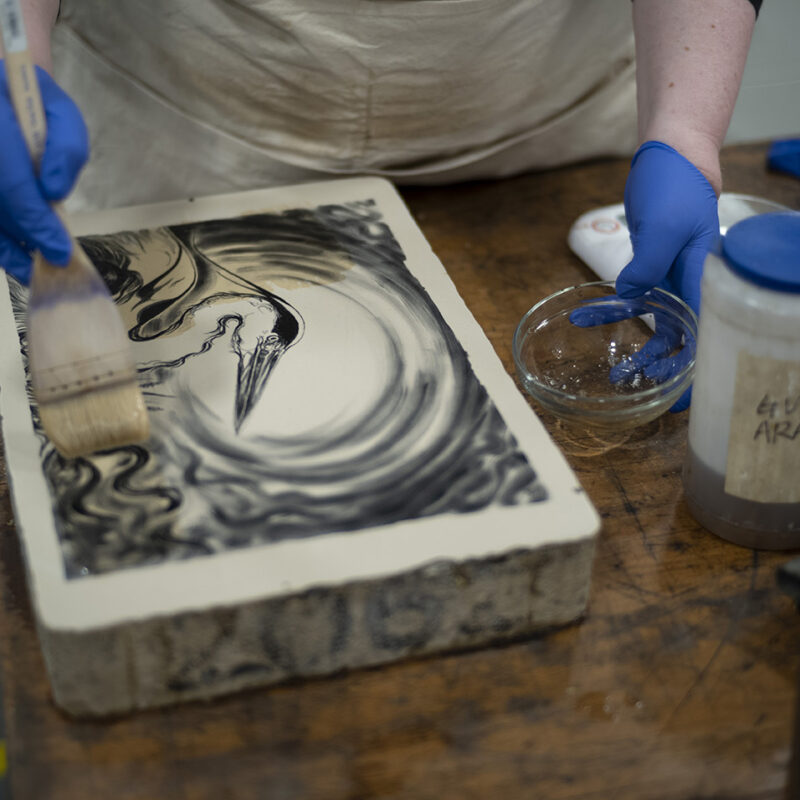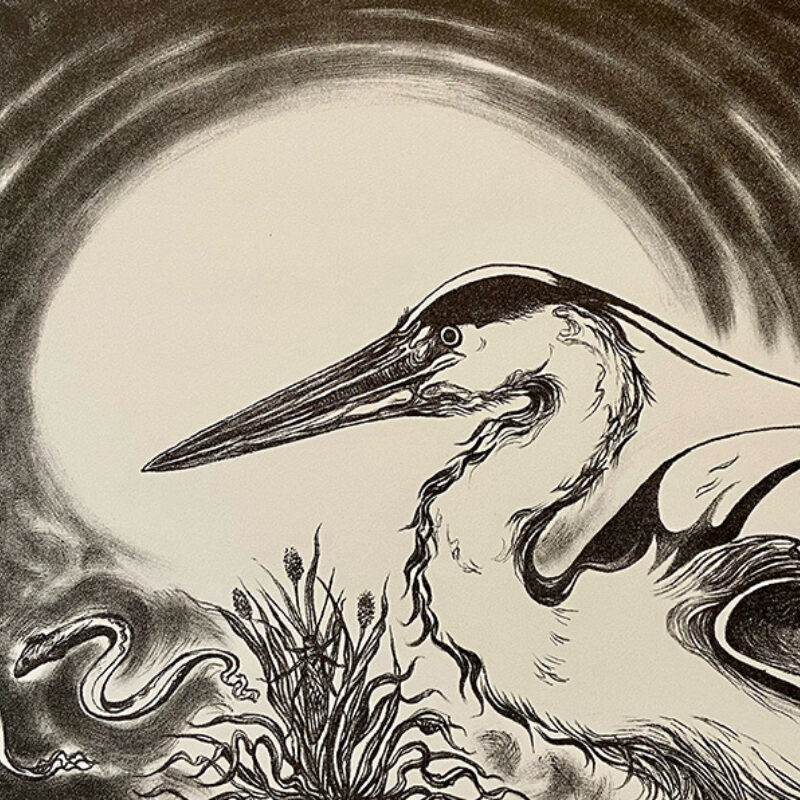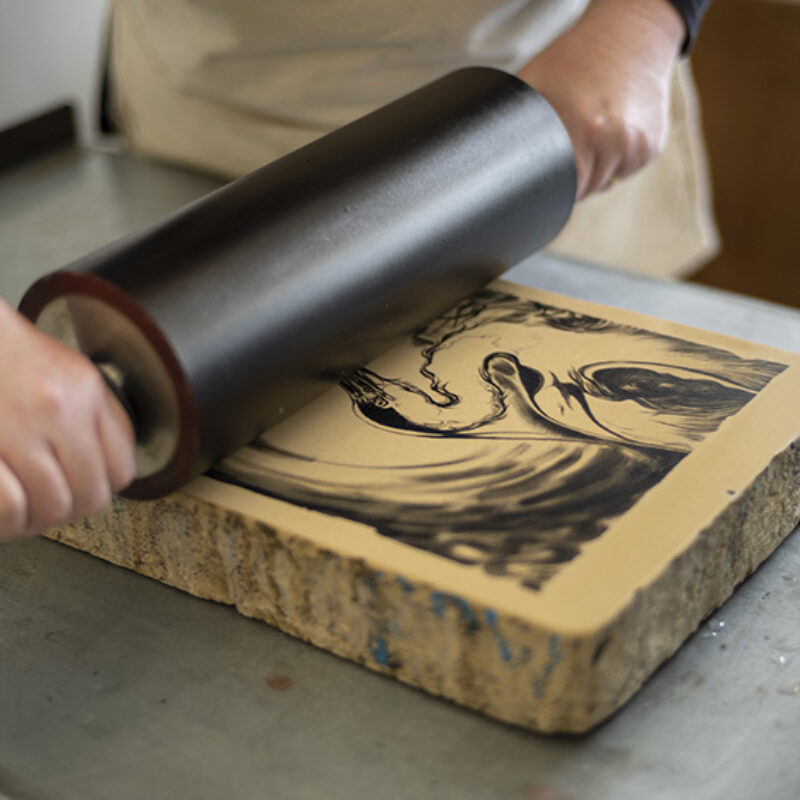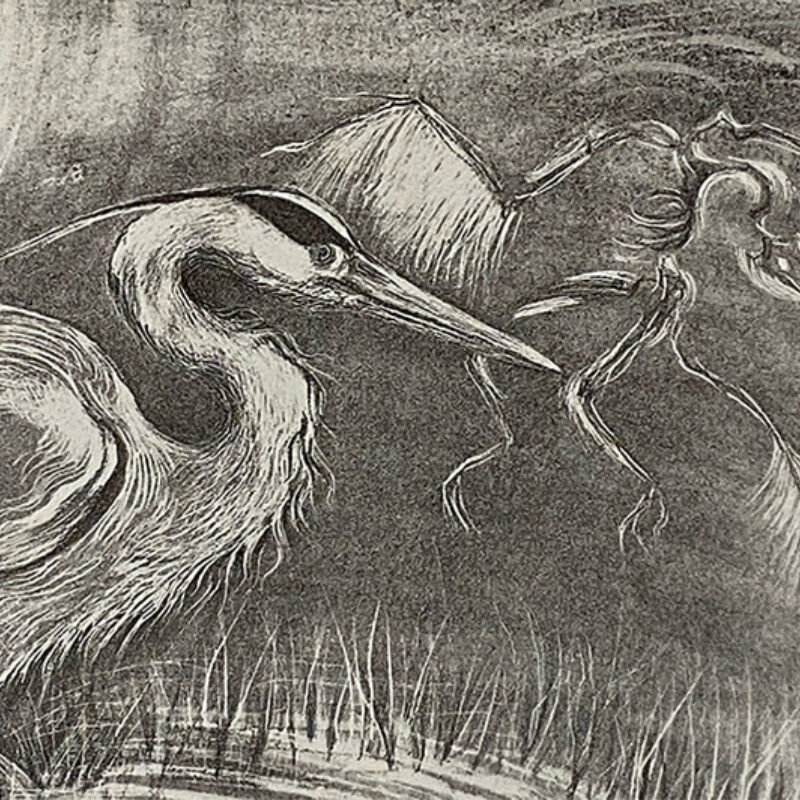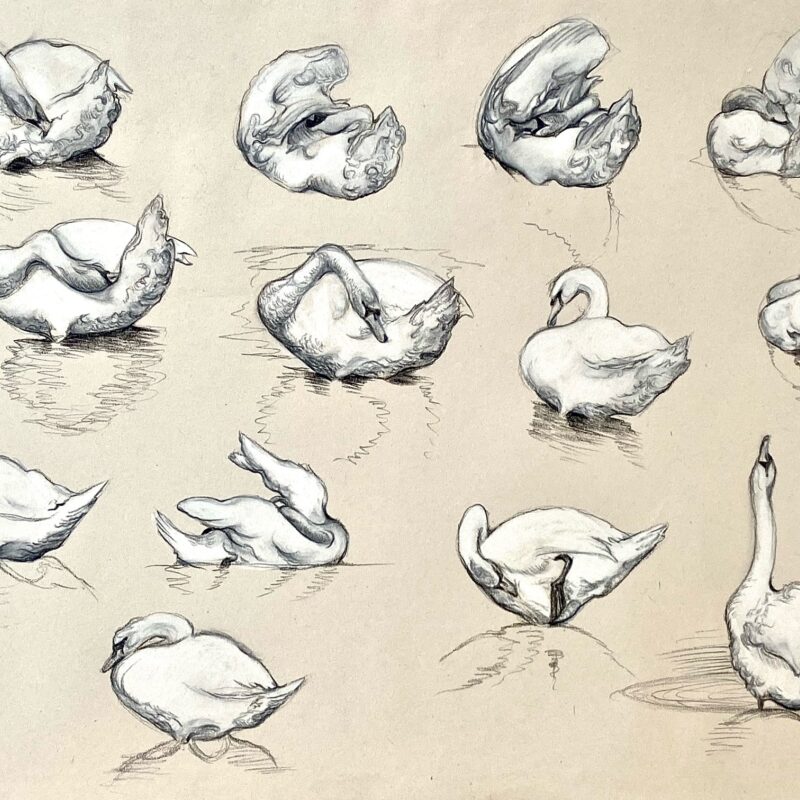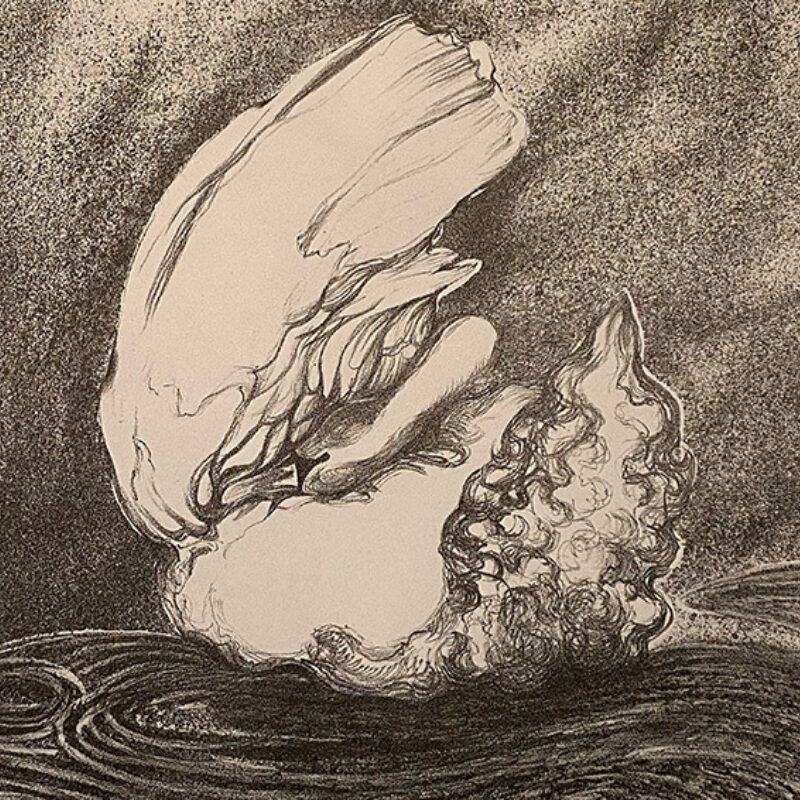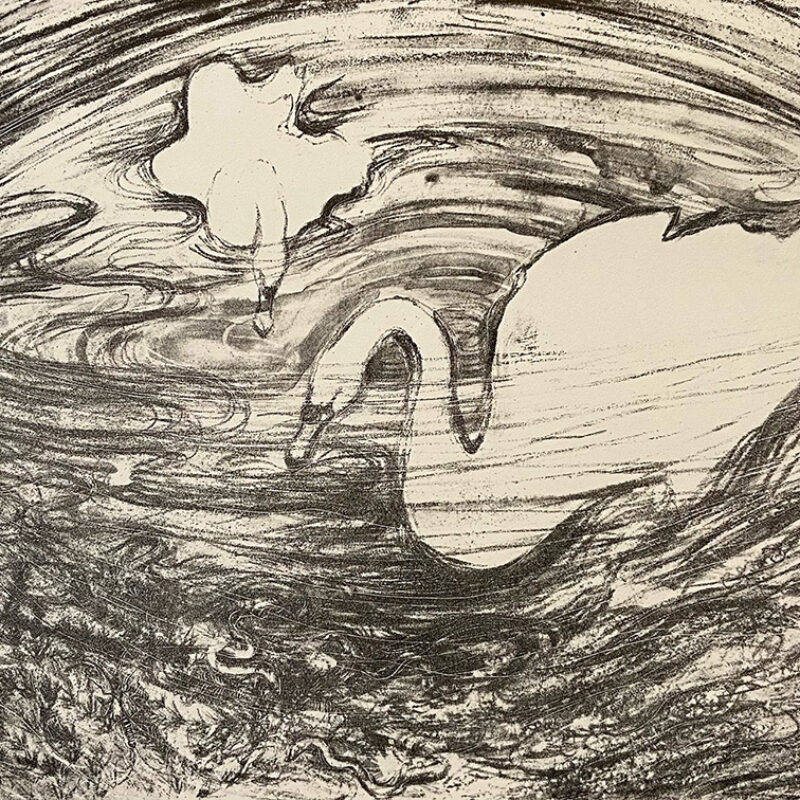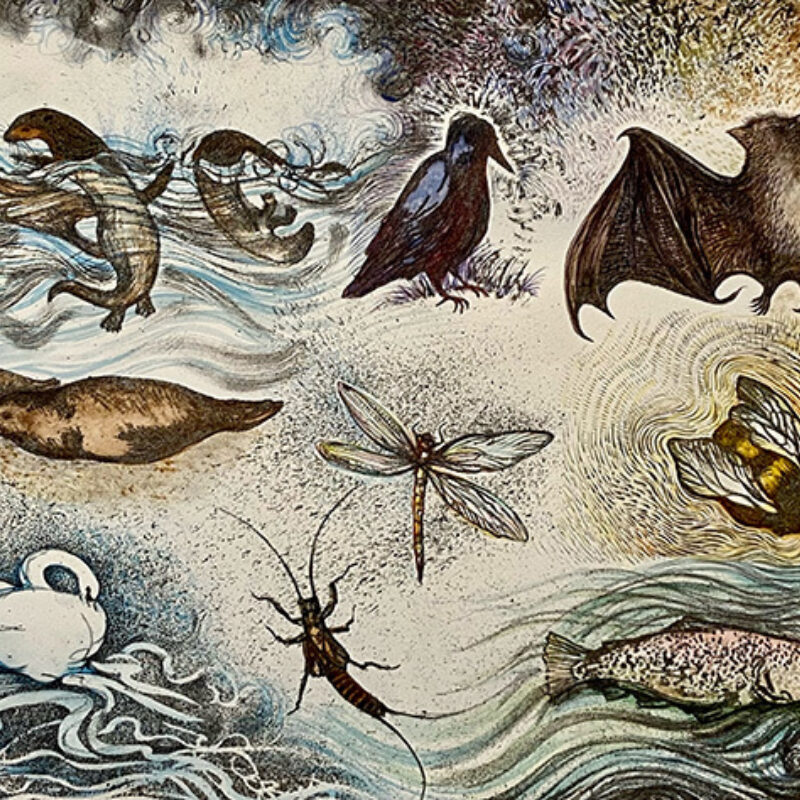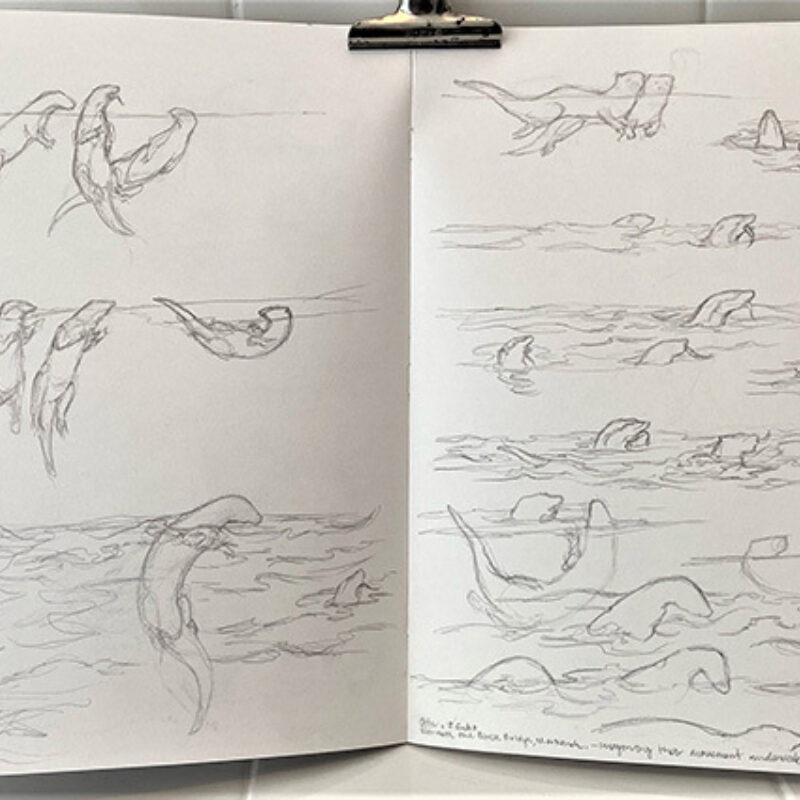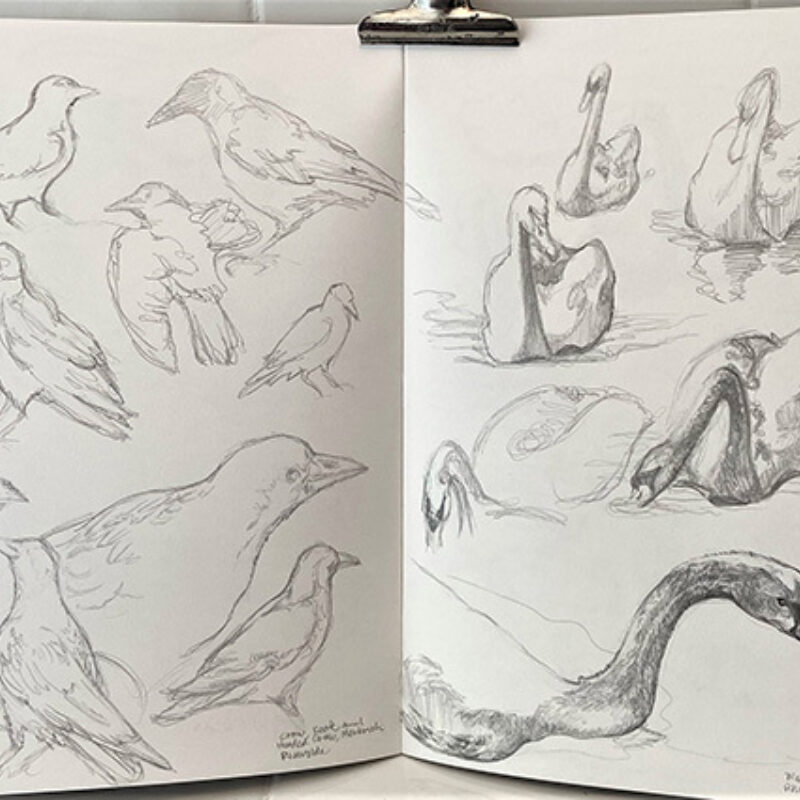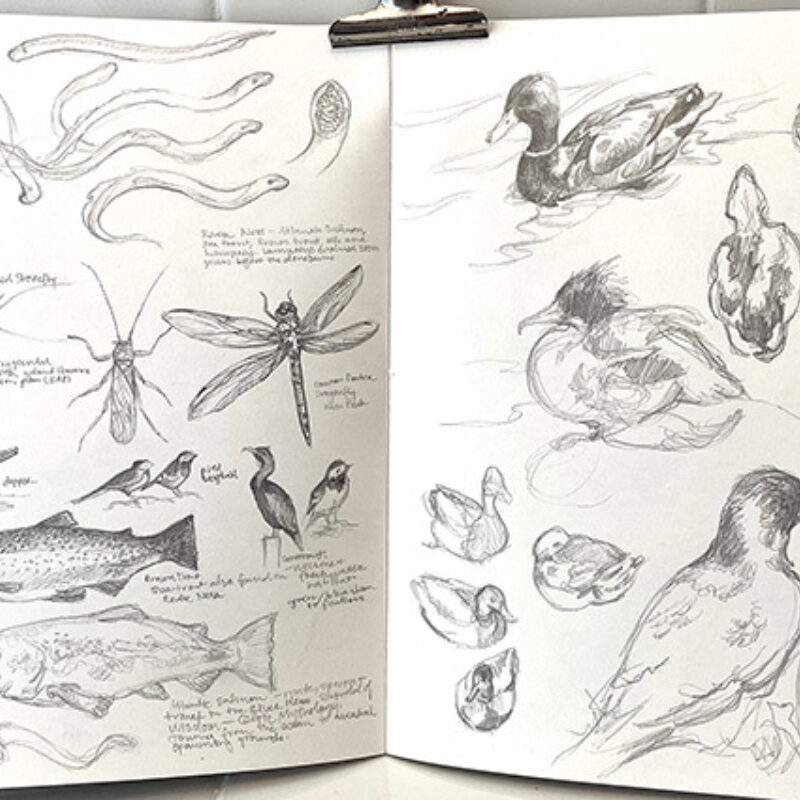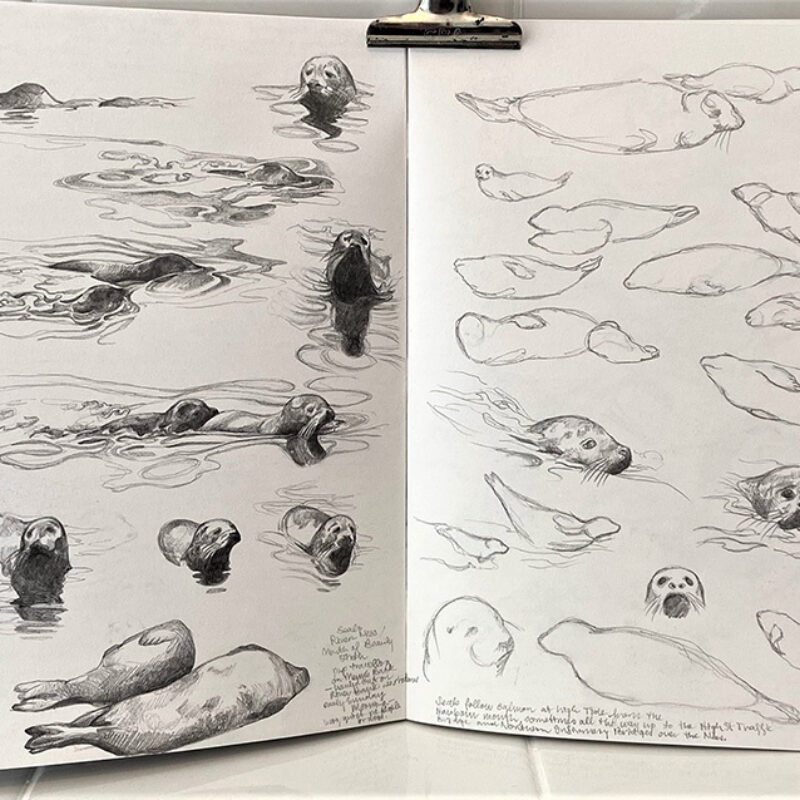Georgina Coburn - The Natural Eye Bursary Winner 2021 Report

I think it is important to acknowledge that, together with our creative drive as humans, Imagination is the greatest tool we have to shift perception and find hope that enables us to collectively act
Georgina Coburn
The starting point for my Natural Eye Bursary project was the experience of lockdown. During daily walks along the River Ness, Merkinch Nature Reserve and Caledonian Canal, I was amazed by the diversity of life on my doorstep. For many people, the enforced pause of lockdown prompted re-evaluation of what we value most. The global pandemic has shown how fragile life is, and how nature can bounce back when intensive human activity is reduced. Many people discovered the hope and resilience to be found watching animals, birds, insects and the changing seasons, not as a pastime, but an imperative.

The aim of my Natural Eye bursary project was to expand my practice by learning a new technique of stone lithography at Highland Print Studio, exploring the range of mark making possibilities and focusing on local wildlife. I began by researching local species with the assistance of the Highland Countryside Ranger Service, Highland Council Environmental Advice and Consultancy Team and Inverness Museum and Art Gallery. I discovered overlooked species such as the Northern Red February Stonefly, lamprey, Water Starwort and Horn Wort as part of the whole Ness ecosystem. Drawing on my local walks and studies at the museum, I completed a series of preliminary drawings in pencil, watercolour, inks and conte. I then began to research the history of stone lithography and its techniques in preparation for time in the studio.
The 155-million-year-old Bavarian Limestone used for stone lithography is a beautiful surface unlike any other to draw on, carrying the history of the earth within it. I learned to grain the stone surface, experimented with mark making, drawing on the stone, blanket and spot etching, inking on a variety of textured papers, the on-press technique of Chine Collé and hand coloured tinting. I love the texture and rich, velvety marks made from rubbing crayon onto the stone with a cloth, suspending liquid tusche in pools of water and allowing it to dry, drawing with a mask of gum Arabic and using a fine tusche spray over it, striking the stone with crayon 360 degrees in the round and using Goya’s technique of scraping marks from a midtone ground. I worked on a series of test stones, gradually building knowledge of the process with each one to produce a series of prints. The range of marks achievable in stone lithography is extraordinary and I’m keen to carry some of the multi-layered techniques I learned into my everyday drawing practice. My Natural Eye Bursary gave me the opportunity to learn an intensive, complex technique that would not be otherwise possible. As an emerging artist, it also gave me much needed time and focus to experiment freely during a difficult period.
We are at a crossroad as a species and I know that many people feel overwhelmed at the loss of species, natural habitats and the ongoing climate crisis. I think it is important to acknowledge that, together with our creative drive as humans, imagination is the greatest tool we have to shift perception and find hope that enables us to collectively act. In Lockdown, Mute Swan Cygnet the vortex of marks on lithographic stone is also an egg form, with the possibility of new life and new ways of seeing/being on the planet, in unison with all living things.
